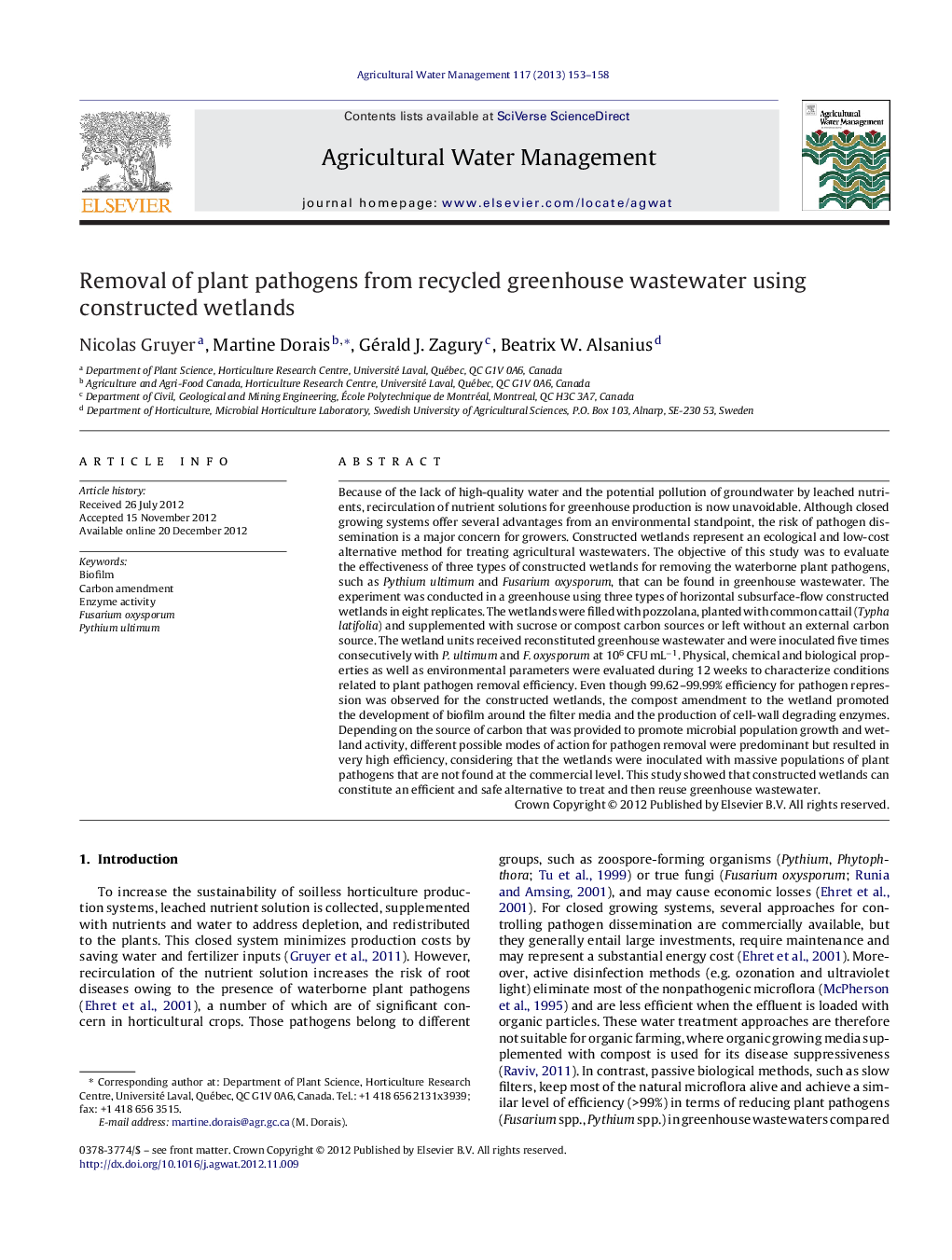| کد مقاله | کد نشریه | سال انتشار | مقاله انگلیسی | نسخه تمام متن |
|---|---|---|---|---|
| 4479042 | 1622962 | 2013 | 6 صفحه PDF | دانلود رایگان |

Because of the lack of high-quality water and the potential pollution of groundwater by leached nutrients, recirculation of nutrient solutions for greenhouse production is now unavoidable. Although closed growing systems offer several advantages from an environmental standpoint, the risk of pathogen dissemination is a major concern for growers. Constructed wetlands represent an ecological and low-cost alternative method for treating agricultural wastewaters. The objective of this study was to evaluate the effectiveness of three types of constructed wetlands for removing the waterborne plant pathogens, such as Pythium ultimum and Fusarium oxysporum, that can be found in greenhouse wastewater. The experiment was conducted in a greenhouse using three types of horizontal subsurface-flow constructed wetlands in eight replicates. The wetlands were filled with pozzolana, planted with common cattail (Typha latifolia) and supplemented with sucrose or compost carbon sources or left without an external carbon source. The wetland units received reconstituted greenhouse wastewater and were inoculated five times consecutively with P. ultimum and F. oxysporum at 106 CFU mL−1. Physical, chemical and biological properties as well as environmental parameters were evaluated during 12 weeks to characterize conditions related to plant pathogen removal efficiency. Even though 99.62–99.99% efficiency for pathogen repression was observed for the constructed wetlands, the compost amendment to the wetland promoted the development of biofilm around the filter media and the production of cell-wall degrading enzymes. Depending on the source of carbon that was provided to promote microbial population growth and wetland activity, different possible modes of action for pathogen removal were predominant but resulted in very high efficiency, considering that the wetlands were inoculated with massive populations of plant pathogens that are not found at the commercial level. This study showed that constructed wetlands can constitute an efficient and safe alternative to treat and then reuse greenhouse wastewater.
► Constructed wetlands remove up to 99.99% of Pythium ultimum and Fusarium oxysporum.
► Carbon enrichment in constructed wetlands has no effect on plant pathogen removal.
► Cell-wall degrading enzymes and microorganisms contribute to pathogen removal.
► Constructed wetlands are an alternative method for treating greenhouse wastewater.
Journal: Agricultural Water Management - Volume 117, 31 January 2013, Pages 153–158